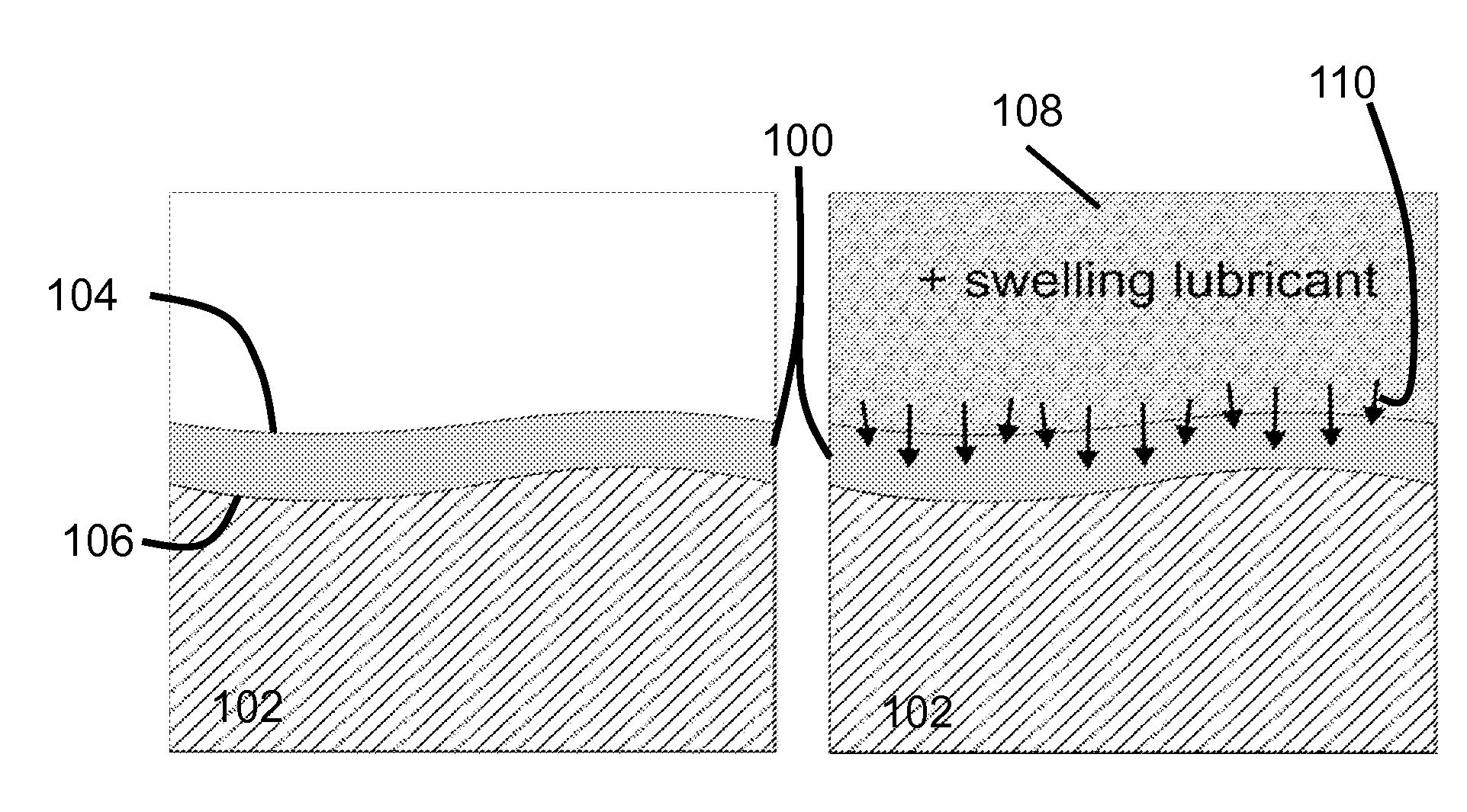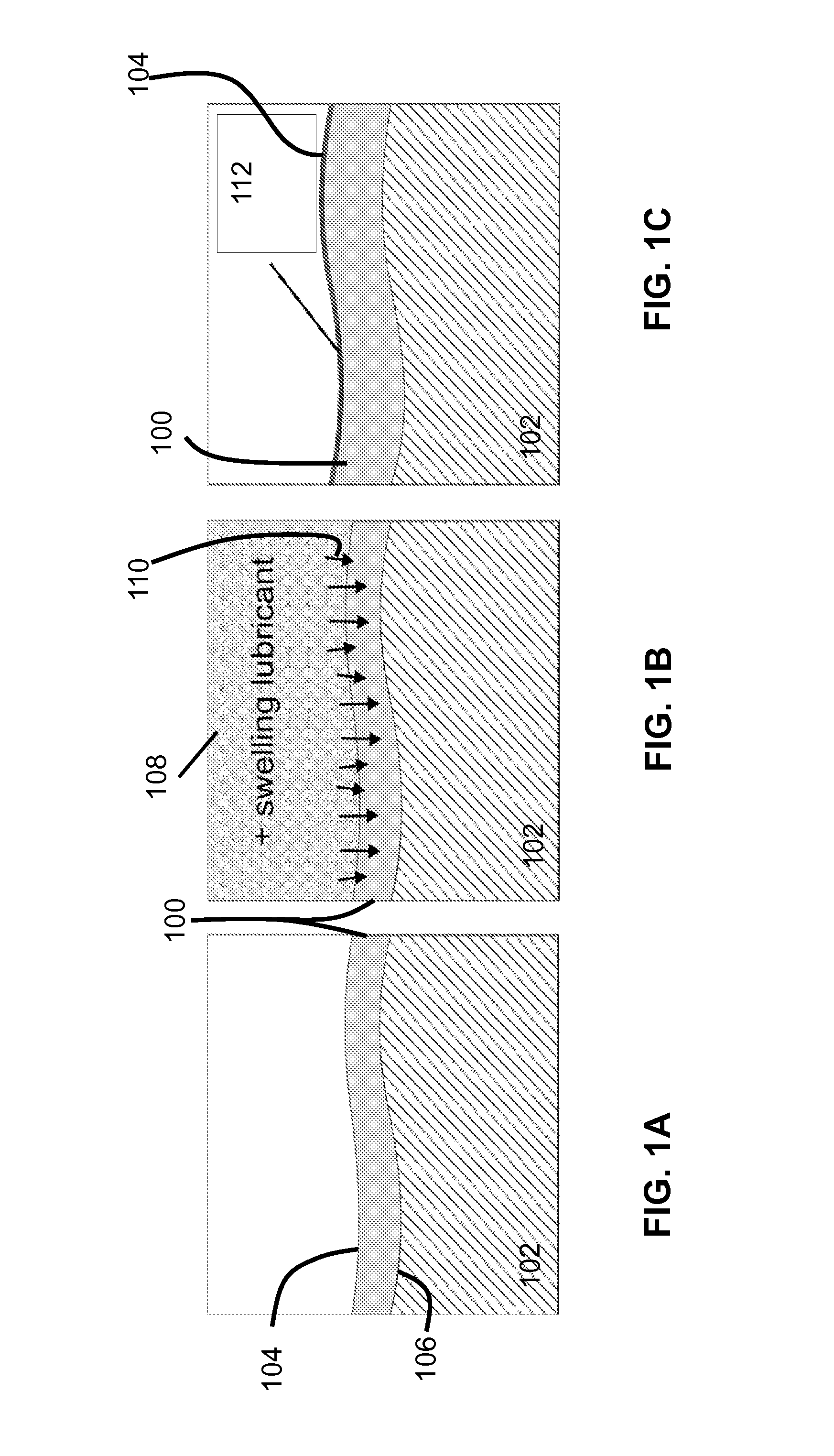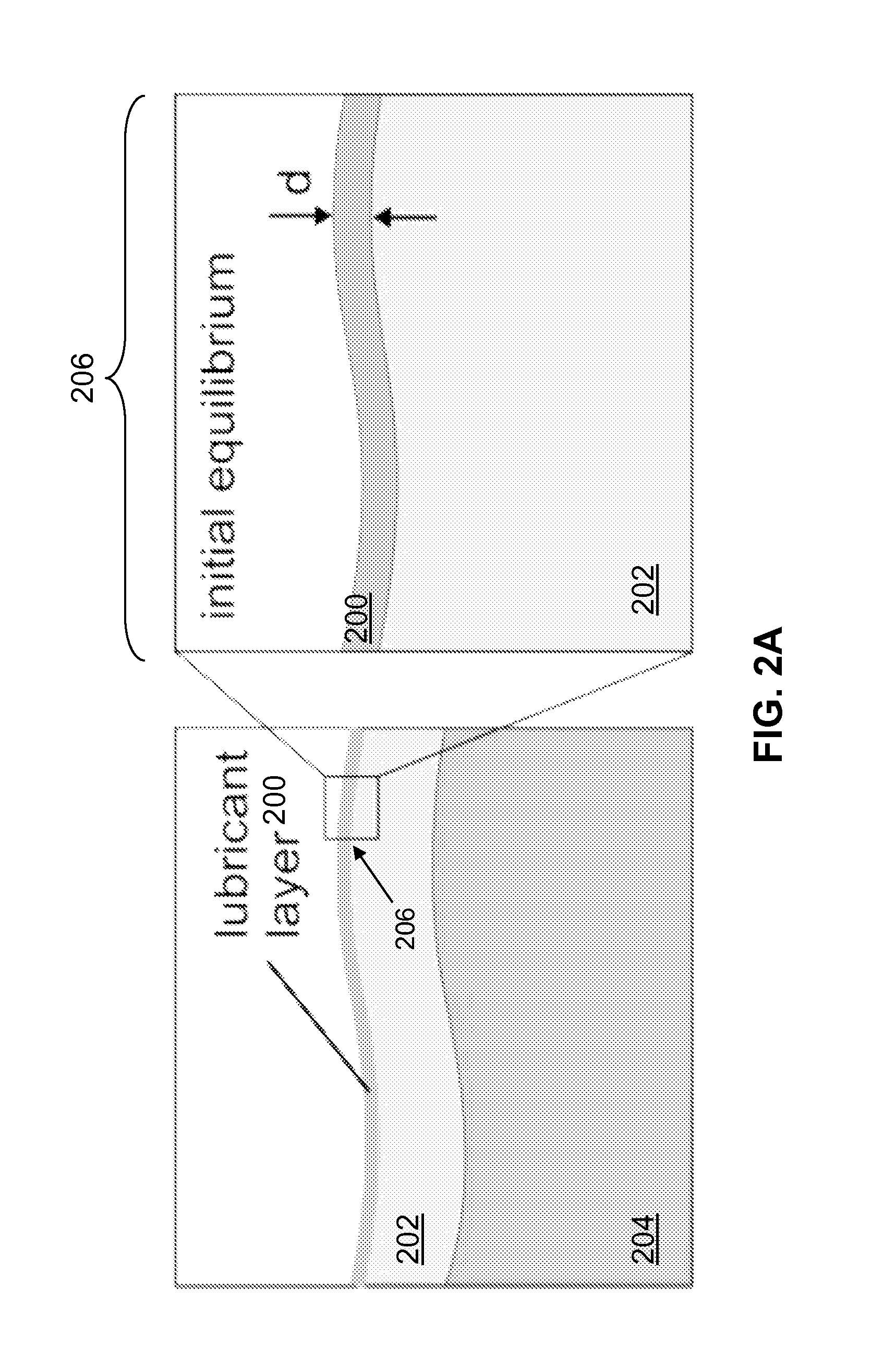Slippery self-lubricating polymer surfaces
- Summary
- Abstract
- Description
- Claims
- Application Information
AI Technical Summary
Benefits of technology
Problems solved by technology
Method used
Image
Examples
example 1
Synthesis and Properties of Perfluorinated Polymers and Elastomers Based on 2-(perfluorooctyl)ethyl Methacrylate
[0223]2-(perfluorooctyl)ethyl methacrylate was mixed with perfluoropolyether dimethacrylate (molecular weight ca. 4 kDa, MD40, Solvay Chemicals) in volume ratios ranging from 50% to 0% crosslinker with the optional addition of 10% Krytox™ 100 lubricant. A UV photoinitiator (Darocur 1173) was added to the solution of monomer and crosslinker at 5%. The pre-polymer solution was filled into polydimethylsiloxane (PDMS) molds to create bulk samples for characterization and testing. Filled molds were purged with nitrogen in a UV chamber for two minutes followed by curing for three minutes. The transparency and deformability of samples depended on the monomer:crosslinker ratio and incorporation of lubricant into the pre-polymer solution. Images of the resulting cured coatings are shown in FIG. 8. Bulk squares of different perfluorinated samples with monomer volume percentage liste...
example 2
Contact Angle, Deformability, and Swelling of Perfluorinated Polymers and Elastomers Based on 2-(perfluorooctyl)ethyl Acrylate
[0225]In another example, perfluorooctyl ethyl acrylate (PFOA) was used as the monomer in preparing polymer coatings and polymer replicas to compare the water repellency and transparency of the polymer replicas to coated samples. A glass slide was coated with polymer coating prepared from the polymerization of perfluorooctylethyl acrylate (PFOA). A polymer replica was prepared having a nanostructured pattern from a polymer precursor including perfluorooctylethyl acrylate (PFOA) and MD40. Demonstration of the water-repellency and transparency of both samples is shown in FIG. 9B. In FIG. 9B (left), spherical dyed water drops sit with high contrast angle on the glass slide coated with the as-prepared polymer, indicating water-repellency. In FIG. 9B (right), a polymer replica (PFOA / MD40, 50 / 50) with nanostructured pattern (rainbow area) on the surface is shown. B...
example 3
Preparation of Fluorogels
[0227]Fluorinated polymer made from the precursor of perfluorooctylethyl acrylate (PFOA) (monomer), MD40 (crosslinker) and FC70 (lubricant) were prepared in varying ratios.
[0228]FIG. 11 is a photograph of four polymer sheets prepared from precursor compositions having a perfluorooctylethyl acrylate (PFOA) (monomer), MD40 (crosslinker) and FC70 (lubricant) ratio or 1:1:1 and 1:1:1.5 and 1:1:2 and 1:1:3 (composition ratio are marked in the figure). Here the lubricant was directly infused into the polymer precursor during synthesis, resulting in a fluorogel after the polymerization.
[0229]The swelling of the fluorogel with the fluorinated lubricant is a significant way to render the polymer sheet into a slippery polymer surface. The swelling liquid serves as the lubricant to repel most liquids from hydrocarbon oils to complex fluids. So, there are at least three unique properties of a fluorogel: (1) there is no need to modify the polymer before lubricating it wi...
PUM
| Property | Measurement | Unit |
|---|---|---|
| Fraction | aaaaa | aaaaa |
| Fraction | aaaaa | aaaaa |
| Fraction | aaaaa | aaaaa |
Abstract
Description
Claims
Application Information
 Login to View More
Login to View More - R&D
- Intellectual Property
- Life Sciences
- Materials
- Tech Scout
- Unparalleled Data Quality
- Higher Quality Content
- 60% Fewer Hallucinations
Browse by: Latest US Patents, China's latest patents, Technical Efficacy Thesaurus, Application Domain, Technology Topic, Popular Technical Reports.
© 2025 PatSnap. All rights reserved.Legal|Privacy policy|Modern Slavery Act Transparency Statement|Sitemap|About US| Contact US: help@patsnap.com



